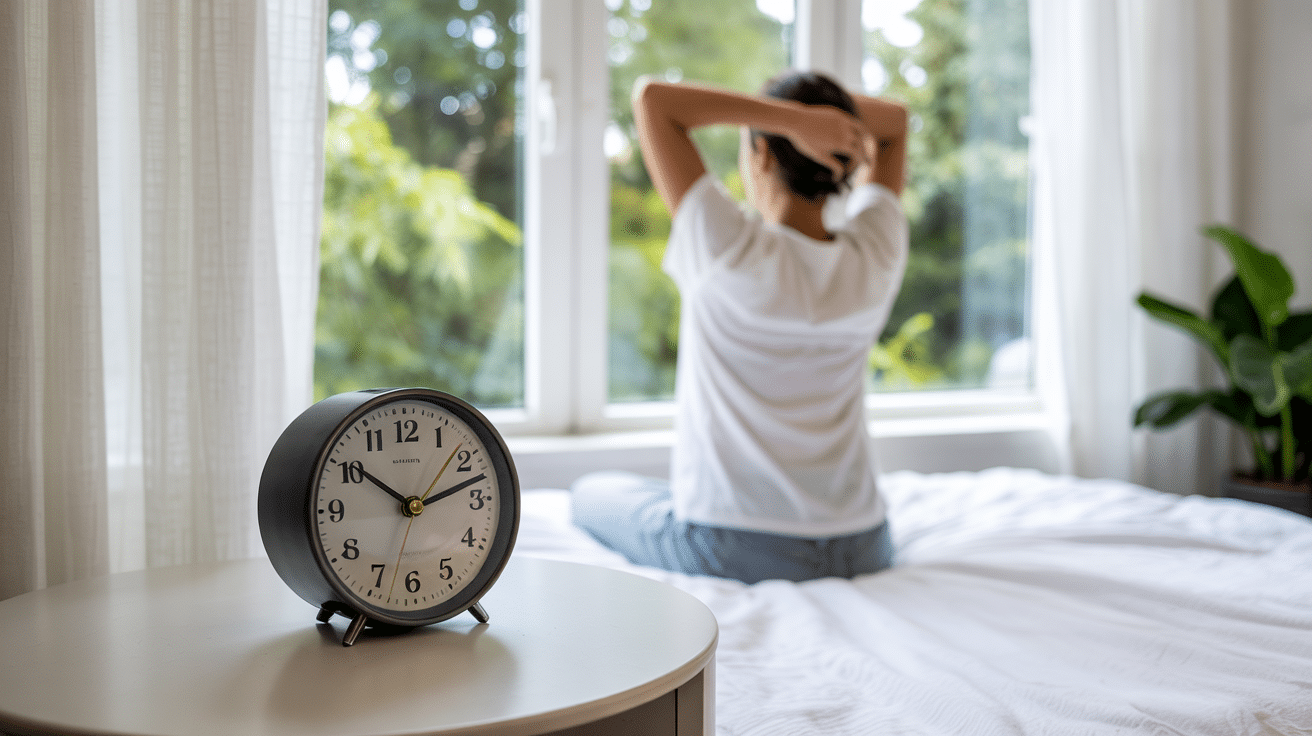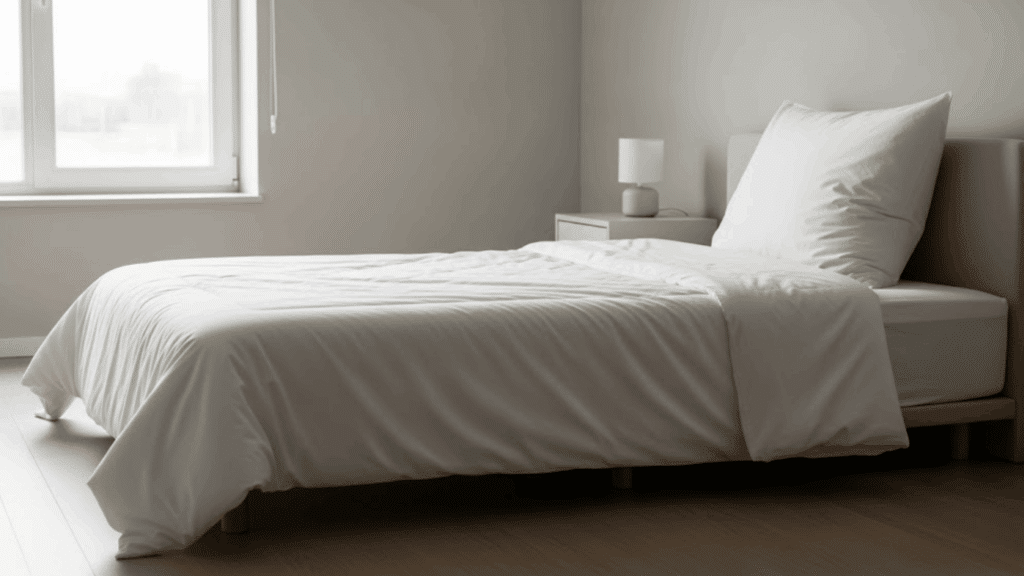Sleep should be a peaceful restoration period, yet millions of people find themselves shifting positions throughout the night, unable to find comfort.
This restless movement prevents the deep, restorative sleep our bodies need to function properly. Poor sleep quality affects concentration, mood, immune function, and overall health.
\When you spend hours moving from side to side, your sleep cycles get disrupted, leaving you tired and unfocused the next day.
The good news is that most tossing and turning issues can be addressed with simple changes to your sleep habits and environment.
This guide provides proven strategies to help you achieve the calm, uninterrupted rest you deserve.
What Causes Tossing and Turning?
Understanding the root causes of restless sleep helps you target the right solutions. Physical discomfort often stems from an unsuitable mattress, worn pillows, or room temperature issues.
Mental factors play an equally important role – racing thoughts, stress from daily responsibilities, and anxiety about upcoming events can keep your mind active when it should be winding down.
Medical conditions like restless leg syndrome create involuntary movements, while sleep apnea causes frequent micro-awakenings.
Even seemingly minor factors like external noise, bright lights, or uncomfortable sleepwear can trigger restless behavior throughout the night.
Practical Tips to Reduce Tossing and Turning
Finding the right combination of strategies can change your restless nights into peaceful, rejuvenating sleep.
The key lies in addressing multiple factors that contribute to nighttime restlessness, from your physical environment to your mental state.
By implementing these practical solutions systematically, you can identify which methods work best for your specific situation and sleep challenges.
1. Optimize Your Sleep Environment

Your bedroom affects sleep quality. Choose a mattress that supports natural body alignment – softer for side sleepers, firmer for back and stomach sleepers. Replace every 7-8 years.
Select pillows based on sleep position: thick for side sleepers, medium for back sleepers, thin or none for stomach sleepers.
Keep the room temperature at 65-68°F. Use blackout curtains and white noise machines. Remove electronics to reduce blue light exposure.
2. Establish a Sleep Routine

Consistency trains your body’s internal clock. Go to bed and wake up at the same time daily, including weekends, to regulate your circadian rhythm.
Create a pre-sleep routine 30-60 minutes before bed. Take a warm bath, stretch gently, or read. Avoid intense exercise, work tasks, or emotional discussions.
Try relaxation techniques for an overactive mind. Use the 4-7-8 breathing method: inhale for 4 counts, hold for 7, exhale for 8. Progressive muscle relaxation also helps by tensing and releasing muscle groups.
3. Mind Your Diet

What you consume affects sleep quality. Avoid large meals within three hours of bedtime, as digestion interferes with rest.
Limit caffeine after 2 PM since it stays in your system 6-8 hours. Alcohol may cause initial drowsiness but disrupts sleep cycles later, causing frequent awakenings.
Reduce fluids two hours before bed to minimize bathroom trips. Herbal teas like chamomile or valerian can help with relaxation if consumed early enough.
4. Manage Stress and Anxiety

Racing thoughts cause tossing and turning. Set aside “worry time” earlier – write down concerns and solutions, then set them aside. Journaling helps process emotions and clear your mind.
Practice mindfulness to stay present instead of focusing on tomorrow’s challenges. If you wake with anxious thoughts, use breathing exercises or visualization to redirect focus.
Consider therapy if stress consistently interferes with sleep. Cognitive Behavioral Therapy for Insomnia (CBT-I) teaches techniques to address sleep-related anxiety.
5. Physical Activity and Exercise

Regular exercise improves sleep quality by reducing stress hormones and promoting physical tiredness. Aim for at least 30 minutes of moderate activity most days.
However, gentle activities like yoga or stretching before bed can actually help you relax. Focus on poses that release tension in areas where you hold stress.
If you have a sedentary job, make sure to move throughout the day. Even short walks or stretching breaks can help tire your body appropriately for nighttime rest.
6. Avoid Screen Time Before Bed

While short power naps (20-30 minutes) can be refreshing, longer or late-afternoon naps can interfere with nighttime sleep. If you must nap, do so before 3 PM and keep it brief.
Blue light from screens suppresses melatonin production, your body’s natural sleep hormone. Stop using phones, tablets, computers, and televisions at least one hour before bed.
Replace screen time with calming activities like reading physical books, listening to soft music, or practicing relaxation techniques.
Here’s your sleep guide with 100 words under each section, avoiding the banned words:
7. Limit Naps

Strategic napping can boost energy without disrupting nighttime rest. Keep daytime sleep sessions under 20-30 minutes to avoid entering deep sleep phases that leave you groggy.
Schedule naps before 3 PM to prevent interference with your natural circadian rhythm. If you feel drowsy late in the day, try light physical activity or bright light exposure instead.
Avoid long afternoon sleep sessions that can shift your internal clock. Short, well-timed naps can refresh you while preserving your ability to fall asleep at bedtime naturally.
8. Stay Hydrated

Proper hydration supports overall health and sleep quality, but timing matters significantly. Drink plenty of water throughout the day to maintain optimal body function and temperature.
If you’re thirsty near bedtime, take small sips rather than large amounts. Monitor your urine color during the day – pale yellow indicates good hydration.
Herbal teas like chamomile can provide both hydration and relaxation benefits when consumed earlier in the evening.
9. Use Sleep-Inducing Scents

Aromatherapy can create a calming bedroom environment that signals your brain it’s time to rest.
Lavender oil has been scientifically proven to reduce heart rate and blood pressure while promoting relaxation.
Chamomile, bergamot, and sandalwood also offer calming properties. Use an essential oil diffuser 30-60 minutes before bed, or apply diluted oils to your pillow or pulse points.
10. Keep Your Bedroom Only for Sleep

Avoid working, eating, or watching screens in bed to maintain strong mental associations between your bedroom and sleep.
This helps train your brain to automatically prepare for rest when you enter the space. Remove work materials, exercise equipment, and electronic devices that might stimulate your mind.
If you live in a small space, create clear boundaries – perhaps using a room divider or designated sleep-only hours. Reading physical books is generally acceptable if it relaxes you.
11. Practice Mindfulness Meditation

Mindfulness meditation calms racing thoughts and physical tension that often prevent sleep. Focus on your breathing, noticing each inhale and exhale without trying to change the rhythm.
When thoughts come, acknowledge without judgment and refocus on your breath. Begin with 5-10 minutes before bed and gradually increase as you get more comfortable.
Body scan techniques work well – mentally check in with each body part from toes to head, releasing tension as you go. Guided meditation apps can help beginners learn techniques.
Regular practice builds the skill of quieting your mind, making it easier to transition from wakefulness to sleep naturally.
When to Seek Professional Help
If you’ve tried multiple strategies without improvement, consult a healthcare provider. Persistent tossing and turning might indicate underlying sleep disorders requiring medical attention.
Sleep apnea, restless leg syndrome, and periodic limb movement disorder all cause involuntary movements during sleep.
Warning signs include loud snoring, gasping during sleep, excessive daytime fatigue despite adequate time in bed, or unusual sensations in your legs.
Don’t ignore chronic sleep problems. Untreated sleep disorders contribute to serious health issues, including heart disease, diabetes, and depression.
Professional intervention can provide solutions when self-help methods aren’t sufficient.
Final Thoughts
Reducing tossing and turning requires addressing both physical and mental factors.
Start with environmental improvements – ensure your mattress, pillows, and room conditions support comfortable rest. Establish consistent routines that signal bedtime to your body and mind.
Pay attention to your diet, exercise regularly but not close to bedtime, and manage stress through proven relaxation techniques.
Remember that changes take time. Be patient and consistent with new habits. If problems persist, seek professional help.
Ready to upgrade your sleep? Start implementing one of these strategies tonight and take the first step toward better rest.





